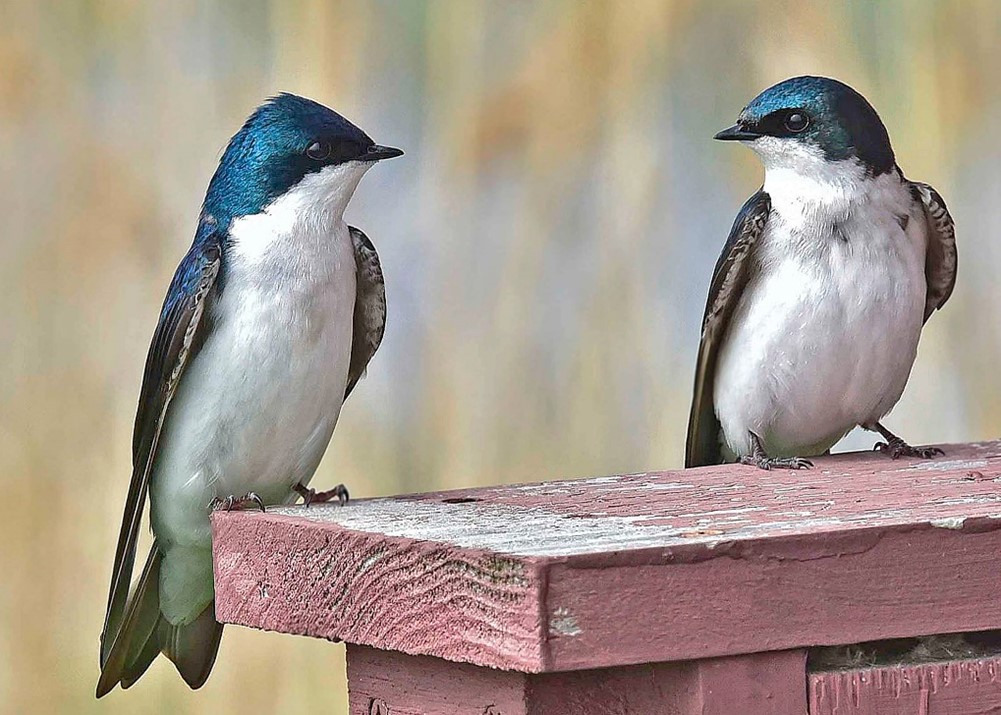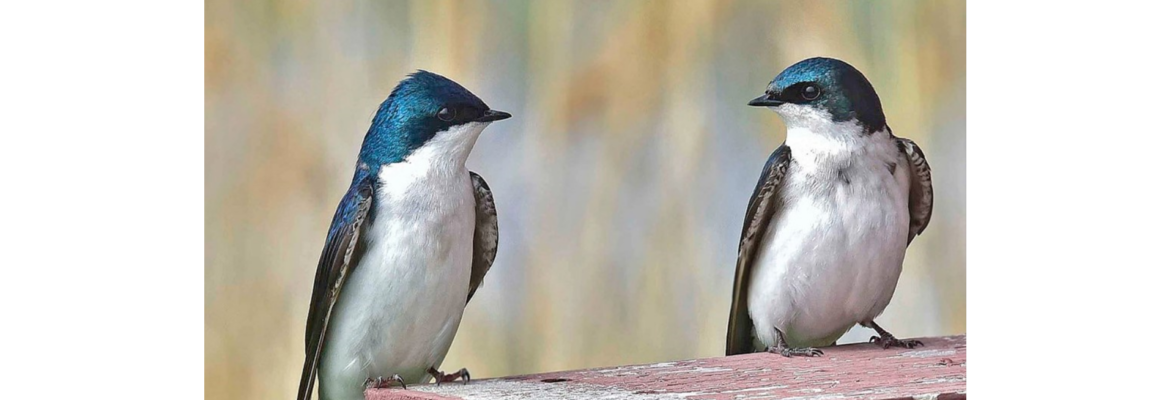The handsome tree swallow (Tachycineta bicolor)

These two male tree swallows appear to be negotiating who gets to claim this bird house. Photo by Diane Gray Constable.
by Diane Gray Constable
This dapper bird with its steel blue back and snow-white front is one of the first songbirds to return to the Stockbridge area each spring. The open farm fields dotted with trees and ponds are a favorite habitat for them.
When they arrive, they break out of their flocks and search for tree cavities, eaves of buildings, and bird houses to claim as their nesting spots.
The two pictured here are both males. Females have a duller color. Here, it appears they are deciding who gets to claim this bird house. Tree Swallows are territorial when it comes to their nests and prefer other swallow neighbors’ nests to be at least 15 feet away—a good distance to remember when putting out nesting boxes.
The female builds a cup-shaped nest using grasses and other plant materials. She lines it with feathers for warmth, and mosses to keep occupants dry. The eggs hatch in two weeks, and both parents feed the hatchlings until they are ready to fly at about three weeks. Once the fledglings leave, the parents will continue to feed them for about three more days.
They eat a variety of about two-thousand insects a day, many we consider pests such as flies and mosquitoes. It is fun to spend an evening watching a group of them dip, dive, and swirl in the summer skies as they feed on the wing. They also drink and bathe while fly-dipping down to skim the surface of pond waters for a sip, a bit deeper for a bath. They will perch on trees and utility wires and are rarely on the ground.
Fun fact: Because of their abundance and nesting habits, tree swallows are easily studied and have added to our knowledge of bird behavior and ecology.

Diane Gray Constable


